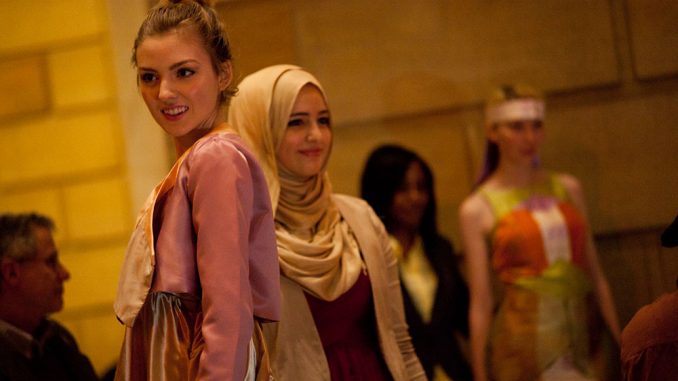
K-pop and Korean fashion is a treasure. At least, that’s what curators at the Philadelphia Museum of Art think.
The event was part of “Treasures from Korea: Arts and Culture of the Joseon Dynasty, 1392-1910,” which will run until May 26. The exhibit focuses on how the Joseon Dynasty shaped Korean culture.
The exhibition features various items that have recently made their way out of Korea. From various forms of traditional Korean robes to works of pottery and paintings, this exhibit brings a new experience to visitors. Taking on an interactive form, it allows visitors to listen through audio tapes and recordings as they make their way through the exhibit.
The exhibit also allows visitors to learn the Korean form of their name through computers. A gift shop has also been set up so visitors can take home a piece of the culture.
“This is an exhibition that we commissioned as a culture exchange between Korea and the U.S,” said Hyunsoo Woo, the Maxine and Howard Lewis associate curator of Korean art at The Philadelphia Museum of Art.
Woo is also the curator and organizer of the exhibit.
“It’s one of the longest dynasties in the world and it remains on the map today with K-pop, Korean movies and Korean food,” Woo said. “These are wonderful materials that you can use as a window to the Korean culture.”
The exhibition has various events celebrating Korean culture scheduled throughout the time it will run at the museum. This past Friday, a fashion show was held, which was inspired by the “Treasures from Korea” exhibit and designed by students from the Art Institute of Philadelphia.

The six students constructed designs inspired by the collection of artifacts being featured in the exhibit.
Sarah Moyn, who runs the “Art After 5” series at the museum and acted as the organizer for the fashion show, said the clothing featured in the exhibit inspired her to reach out to the Art Institute and its student-designers to have them create Joseon Dynasty-inspired pieces.
The students were assigned this as a school project to create a modern and inspired version of the clothing. Each student had various time frames to create their pieces for the show and were given a model or models from Wilhelmina Models to display their designs at the show.
Lashae White, 23, is a senior at the Art Institute and constructed her design in 11 weeks. White created a dress with vibrant orange and green silk fabrics, along with a headpiece inspired by two traditional headpieces of the time period.
“I was definitely inspired by functional items,” White said.
White said a picture of a porcelain brush holder that had flower petals on it inspired her to construct an exaggerated bubble skirt for her garment.
“I took it to heart, any inspiration you can take it and make it yours,” White said.
Nawal Remiki, 19, is in her third year at the Art Institute and created her design in five weeks. Remiki’s garment is a pale orange and purple high-low silk dress with a small silk jacket. Remiki was inspired by a painting of a Korean woman who wore a similar dress from 1700-1800.
“I kind of blended the modern with the traditional,” Remiki said. “I’m a really big fan of Korean culture so I really knew this kind of stuff beforehand.”
Alma Alfarisi, 21, created her four designs as her senior collection. Alfarisi created four separate pieces – two female garments and two male garments – in 10 weeks. Each of Alfarisi’s designs features various shades of blue with pieces of white mixed in.
To create the pieces, Alfarisi said she read a lot about the shift of women’s rights during Confucianism and Neo-Confucianism, which inspired her to create unisex garments with silhouettes that both men and women could wear.
Alfarisi said the pottery featured in the exhibit inspired the color palette for her designs.
“It reflected modesty and simplicity, which Confucianism really is about,” Alfarisi said.
The other main component of this event was K-pop, which Moyn said was a major factor they wanted to incorporate into the show. Throughout the night, popular K-pop music played during lulls between events.
“People don’t know a lot about it and to just get a fresh interpretation through clothing and music,” Moyn said. “I think those are real access points for people to explore the exhibition and culture.”
Caitling O’Connell can be reached at caitlin.oconnell@temple.edu.


Be the first to comment